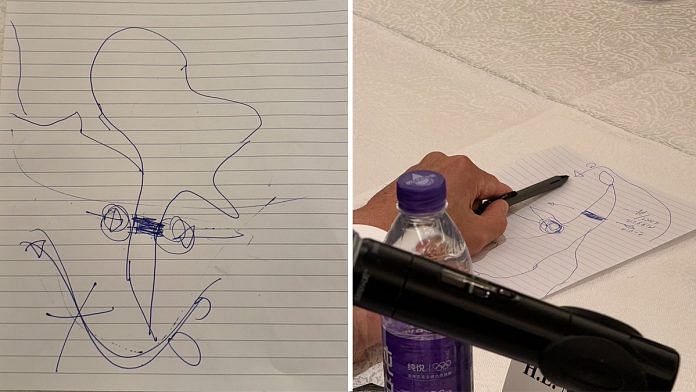Just spend a couple of moments looking at this picture that we are letting freeze on your screen as I set up this episode of Cut The Clutter. This looks like a doodle by somebody who doesn’t have much to do in a conference, getting bored, starts drawing stuff in a notepad. First, I will tell you who is doing it. This is Srettha Thavisin.
Thavisin is the new prime minister of Thailand. He became the prime minister of Thailand in September, that’s when the new government was sworn in. He is sitting in Beijing at the third BRI forum, that is Xi Jinping’s dream project — the Belt & Road Initiative. The third forum, where 23 Heads of State were present, 150+ governments were represented. But the highlight of this forum, as we know, was the presence of Vladimir Putin.
Besides the big power diplomacy and signalling, however, an important idea came from Srettha Thavisin.
What is he drawing? What is the doodle on his notepad? If you see this doodle, and also the map of Thailand, particularly the southern part of Thailand, you will see that the scribble that you see on this map is the line across the narrowest part of Thailand — southern Thailand, that is the Isthmus of Kra.
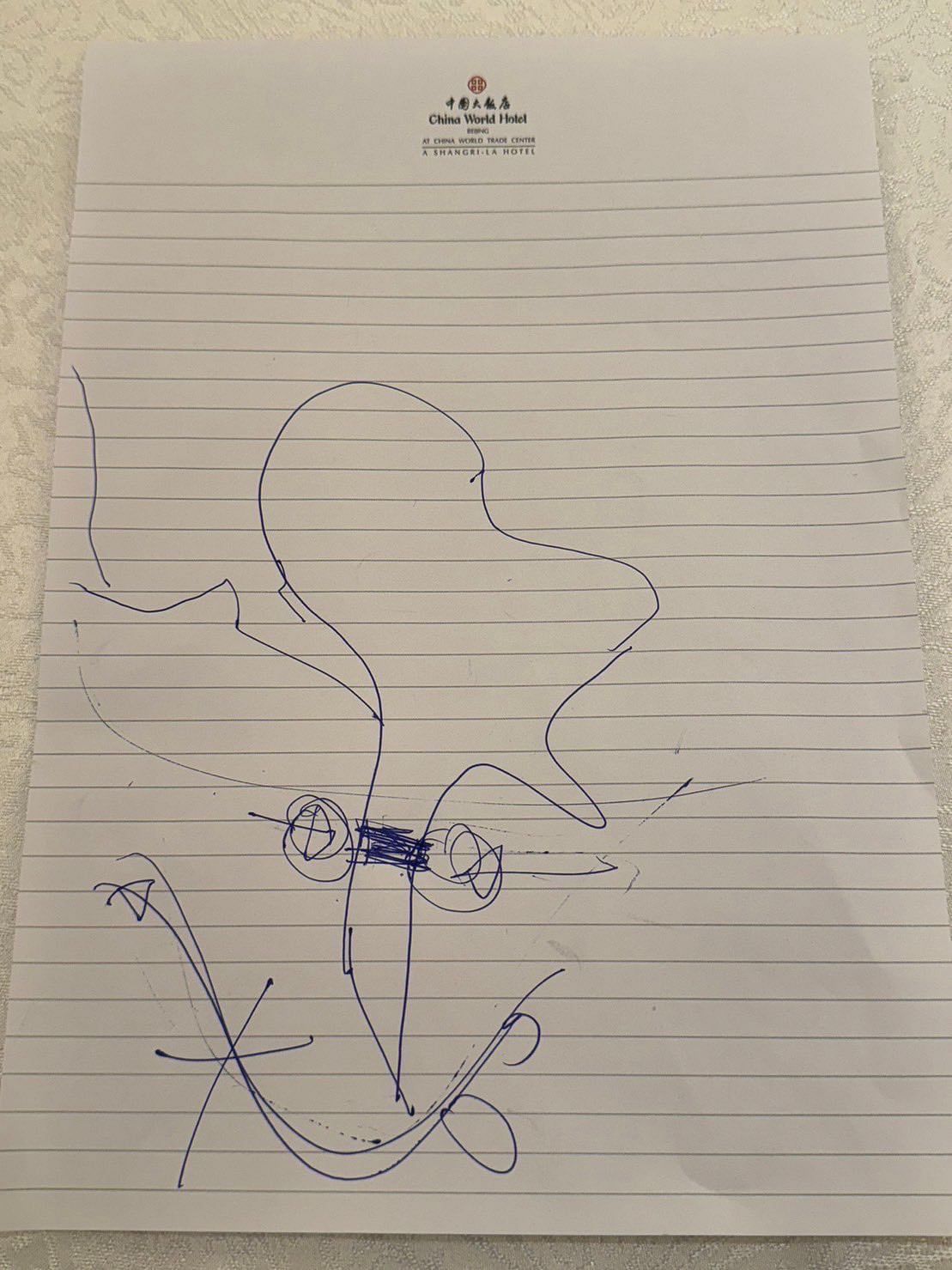
Now, an isthmus is a narrow piece of territory that joins two big bodies of land. To try and understand this, you see the Siliguri corridor, suppose on both sides of it, Nepal and Bangladesh, were two large bodies of sea, then that Siliguri corridor would be an isthmus in a marine geography sense. So this is the narrow part of Thailand. Now the important thing is what lies to the east of this part, to the west of this part.
To the west of this part, if you look at the entire expanse of the seas, you go across the Andaman Sea. So you have a few specks, that is the whole range of the Andaman and Nicobar islands. And then you have a vast expanse of the Indian Ocean, Bay of Bengal, all of it part of the Indian Ocean system. After that vast expanse of the sea, the entire Indian eastern seaboard is exposed there from West Bengal, right down to the tip of Kanyakumari.
If you look east from there, there is the Gulf of Thailand. The Gulf of Thailand is quite small and narrow, just about 600 km in length and not that deep either. This is a kind of extension or inlet — a very giant one of South China Sea which is all a part of the Pacific Ocean system. What you have to the west is Indo, to the east, you have the Pacific.
Between these two lies this narrow belt of Thai territory which at its narrowest is about 50 km. That’s the Isthmus of Kra.
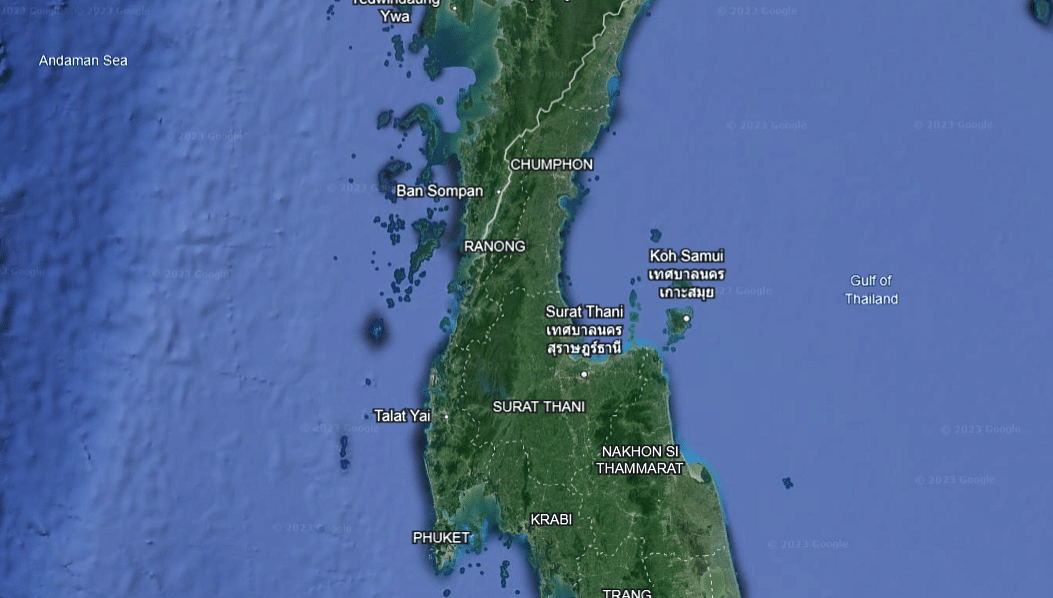
Now, immediately, you would think that oh, if this is the situation, why didn’t someone think of maybe building the equivalent of a Suez Canal or a Panama Canal there?
Because that will cut a lot of travel time and save about 1,200 km. Because right now the shipping that goes through, goes from west to the east, shipping from India, the Middle East, Europe to China takes a circuitous route that comes around the Andaman area and then gets into the Strait of Malacca.
The Strait of Malacca is one of the most significant, strategic choke points in the world. India could dominate the mouth of the narrow Strait of Malacca because the last Indian island in the Andaman and Nicobar system is not that far from where the strait begins and then you have Indonesia — everybody has some grievance with China.
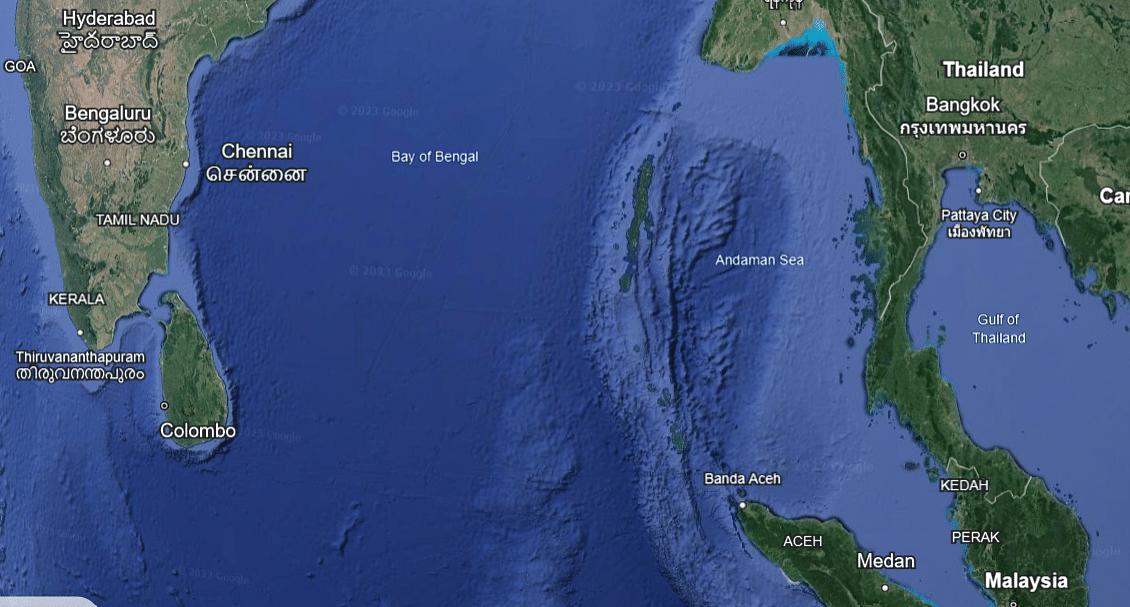
The Americans also play their own games there. But 40 percent of global trade goes through Malacca Strait and 80 percent of China’s energy comes from Malacca Strait. Also, it gives the ports of Singapore and Malaysia their importance.
If you were able to build a Suez Canal, Panama Canal equivalent in this Isthmus of Kra, would you build such a thing today in the 21st century? You could cut this 1,200 km of extra voyage and maybe save anything between two-four days of travel time. Now, a canal is an idea that has been there for a long time and we will come back to it in a few minutes.
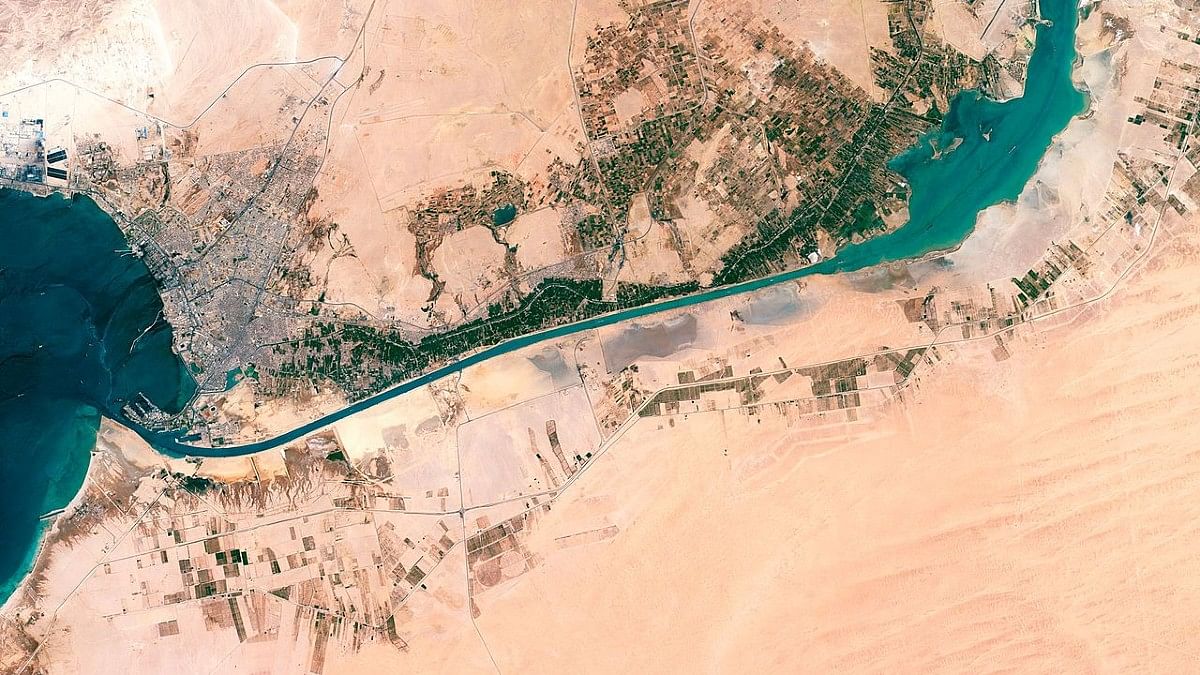
What the Thai prime minister is sketching is a relatively new idea. This has been in the air, it’s been considered, it’s been rejected. But he has now offered this idea at BRI, hoping that the Chinese will fund it. This is not the idea of making a canal of 90 km or 100 km. This is the idea to build a road-rail system of maybe 100-110 km, on top of this land — a humongous infrastructure project.
And then two ports on either side, which means shipping comes from the Chinese side to the South China Sea, offloads at the Thai port on the eastern side, those containers are loaded up on a train or trucks going to the western side, and the new port to be built there then takes those goods including to the West and vice versa.
This can cut two-four days of travel time. The new Thai prime minister thinks that this project will cost $27.44 billion or one trillion Thai Baht. The Thai Baht is about 2.3 Indian rupees. One trillion Thai baht is like ₹2.3 trillion. It will take almost 15 years to build. He thinks it will provide lakhs of jobs, fire up this economy which is right now growing at 2.8 percent maybe. His estimate is, it will go up to 5.56 percent.
ผมลองวาดเส้นทางของ Landbridge ให้กับทางผู้ประกอบการรถไฟในประเทศจีนให้เข้าใจง่ายขึ้น ทำให้เห็นภาพของโครงการสองท่าเรือแต่นับรวมเป็นหนึ่ง โครงการจะลดปัญหาการจัดการซ้ำซ้อน (Double Handling) ได้ครับ
รีบวาดรีบคุยให้เข้าใจ แม้ภาพออกมาไม่ค่อยสวยเท่าไรแต่สื่อสารได้ผลดีเลยครับ 🙂 pic.twitter.com/1Dozo765Sw
— Srettha Thavisin (@Thavisin) October 17, 2023
Thailand is a richer country than India, 5.5 percent growth there will mean a lot and also it will give Thailand something that makes it very important in the region. The question again is where will the money come from? That question is answered by why and where he is making this proposal. He’s made this proposal in Beijing at the BRI forum. So he’s hoping that the Chinese will fund it.
It raises many possibilities and some of those things we are talking about today.
Also Read: Modi has exhumed Nehru’s Global South. Which fails the test of geography, geopolitics and economics
This project looks formidable, forbidding, and you might say it looks unlikely too. But in 21st century technology, one can do these things quite fast, particularly when the Chinese are doing it because in that case, environmental concerns — this is a very sensitive environmental zone, but do the Chinese bother?
That’s a debate of a certain kind and that is where we have some readings. There is a reading from Mark Cogan, who is Associate Professor of Peace and Conflict Studies at Kansai Gaidai University in Osaka in Japan and it’s a piece from The Diplomat. I’m sharing a link with you and you can see that he is a sceptic.
But first off, we’ll see what this project will do and a port will open on either side. Each will be capable, when completed, of handling 20 million cargo containers and what is called 20 million or 20 ft equivalent unit or (TEU). In the business of logistics, they have their own acronyms. So what it means is that the port on either side will be able to handle 20 million cargo containers equivalent to 20-foot size.
To that perspective, the port of Shanghai, the busiest port in the world, in 2019 handled 43 million TEU containers. Almost the equivalent of that these two ports will be able to handle once this project is completed. Suppose because these are the two places we can identify on the map. The port on the western side could be at Ranong and the other side, the eastern side, at Chumphon.
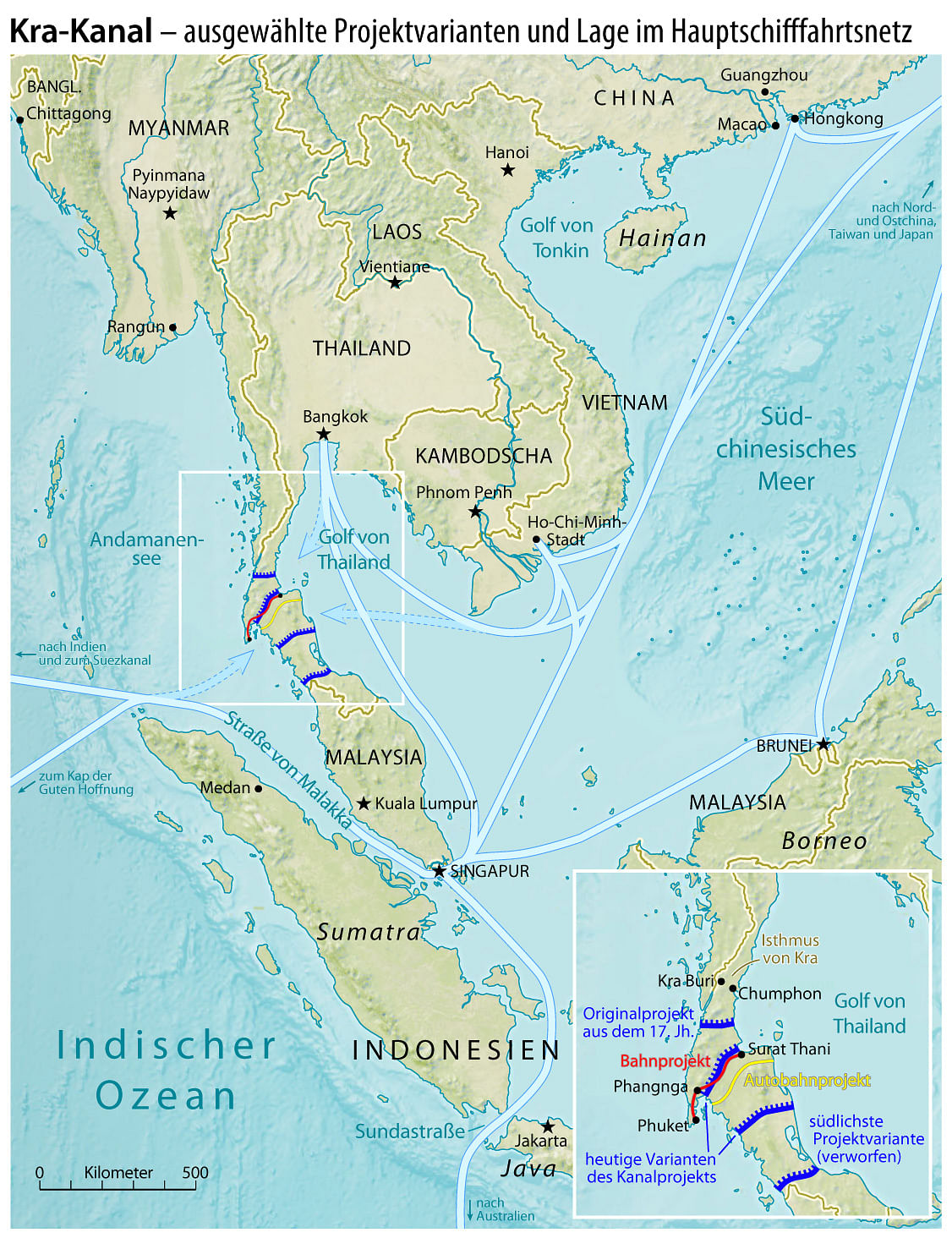
We are looking at the cost of one trillion Thai baht — $27.44 billion. Two sea ports will cost 636 billion Thai baht. The Thai prime minister thinks that he will move his parliament for approval this year in 2023, once he gets that approval, he will put in motion other processes and start road shows for fundraising. His expectation is that the Chinese will put up most of this money, then construction will begin by 2025. His target is that by 2030, the first phase of the project will be over.
Now, this is not his original idea, as I told you. This idea has been floating for some time. Under his predecessor, General Prayuth Chan-ocha, again this idea had come in. Now, Thai politics is very complex. It’s fascinating but very complex. In fact, when an earlier upheaval took place, we dedicated a full episode of Cut The Clutter to Thai politics, including the role of the royalty. Please check that out. I will share a link with you.
In Thailand, why is it that I say it’s even more complex and fascinating than Pakistan. Because in Pakistan, you have the army and the political system, elected governments. In Thailand, you have the army and the political system or elected governments and you also have the monarchy. Monarchy provides continuity in Thailand. The Thai monarch is not a nobody. The Thai monarch has quite a bit of power.
The current monarch, emperor Vajiralongkorn, also carries the title of Rama 10.
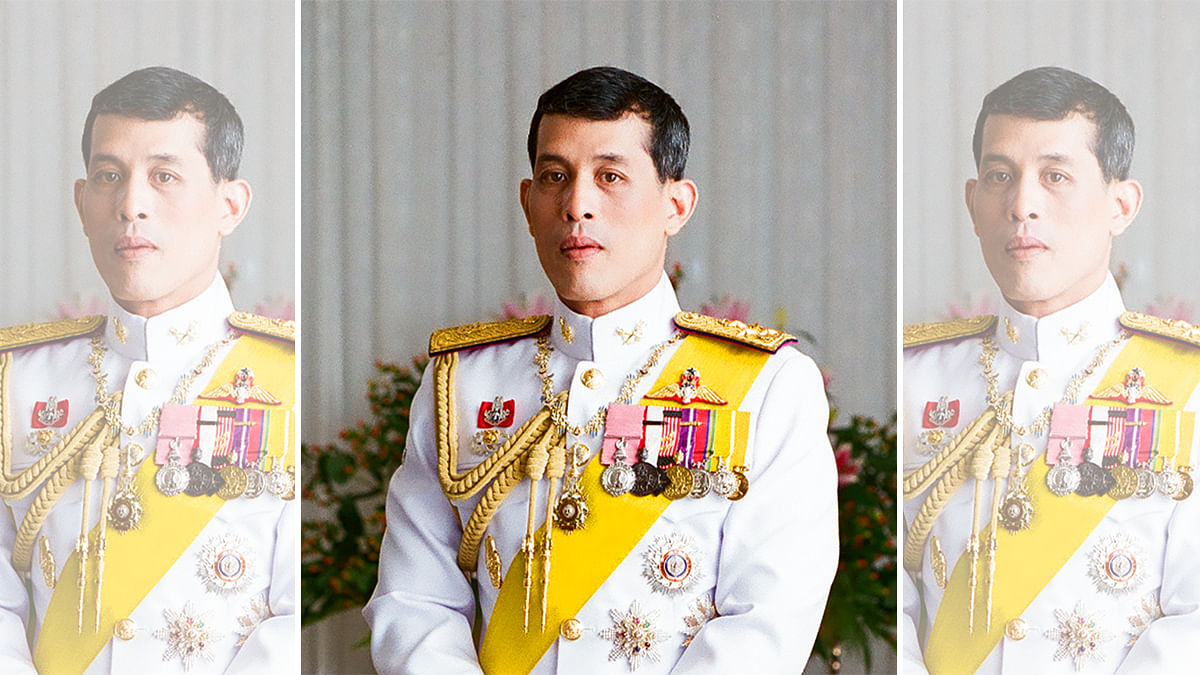
As you know, Thailand has this very mixed culture with a very strong Indian influence although the majority of the people in Thailand are Buddhists, but not all. Therein lies the rub, and I will come to that in a couple of minutes.
Now, the emperor has his own power. Also, it’s a rare emperor in today’s world, in the 21st century, who is protected by the law of Lèse-majesté. What that means is that if anybody insults the king, the person will be jailed.
They take their king very seriously. The king has his powers, the elected government has some powers and also the army, the generals always have some power. Very often the generals become leaders and similarly top businessmen have a lot of power. If you look at today’s prime minister, Srettha Thavisin, who produced this idea at the BRI in Beijing, he himself is a real estate tycoon. He runs the largest real estate company in Thailand. So he also must know something about construction.
This is the incredibly complex and interesting mix of the military, royalty, elected politicians and in some cases, populists like prime minister Thaksin Shinawatra, whose sister also became prime minister — Yingluck Shinawatra, and also generals and top businessmen.
In this system, now we have a new government which is going on its way. But we saw this, the government of general Prayuth Chan-ocha — as you can see, he was an army general who became prime minister — they had also come up with an idea like this that was rejected because it seemed to be too expensive.
Before that, Thaksin Shinawatra and his party were in power.
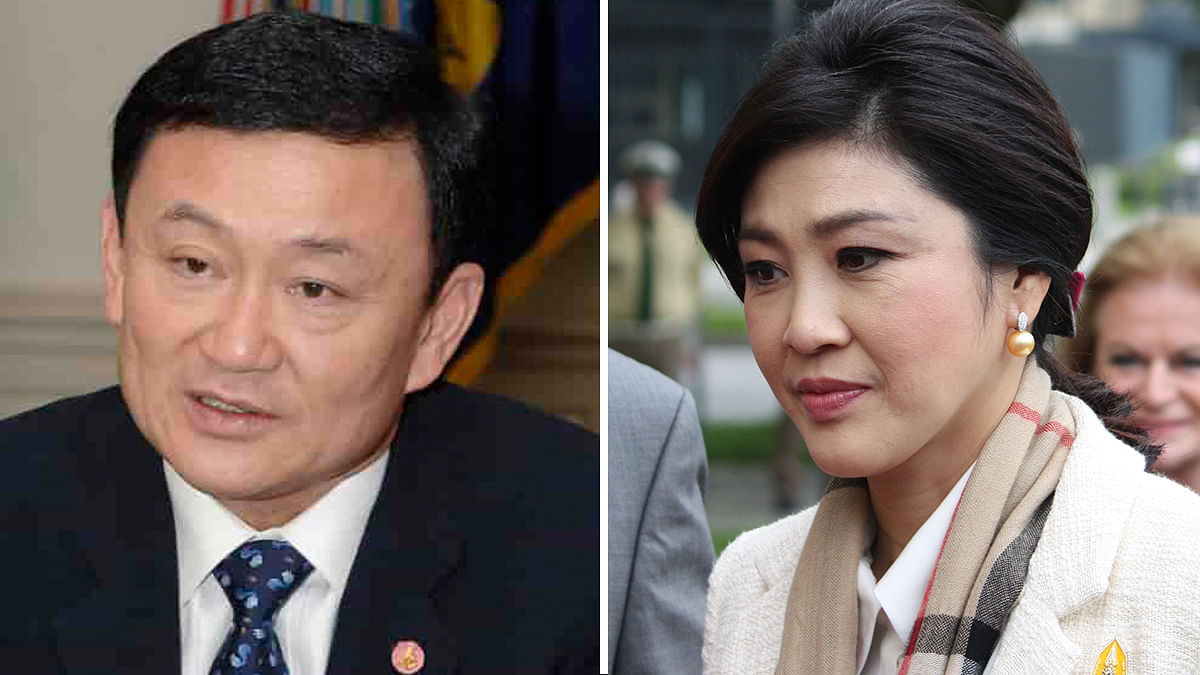
Today, Thaksin’s party is in power in partnership with another party. The current prime minister is from Thaksin Shinawatra’s party. Thaksin Shinawatra has come back from his long exile. When he was in power, his deputy Prime Minister Chavalit Yongchaiyudh, again a general, had also proposed a similar plan. That plan disappeared with the 2006 coup. A precursor of the idea of the road, railway and the two ports — the precursor of the idea is a canal — a Panama canal, Suez canal kind of project. And it goes back 350 years.
So the story is that in 1677, King Narai of Ayutthaya. Ayutthaya is drawn from Ayodhya, I suppose, as Thailand was called in that era. In 1677, King Narai had a dream of making a canal across this isthmus and he called his experts and engineers who told him it’s going to be impossible. The idea was forgotten. Again, Thai royalty brought it back in 1793 because it was after all a famous emperor’s dream. And then both the British and the French, colonial powers, picked it up in the 18th and 19th centuries.
The British it were who made a head-start, at least they sanctioned many surveys: 1843, 1849, 1863, 1872. And the French also started their own activities. Why were they doing it? Both had contrary motives. You know that, in that period, Britain and France were always at war with each other.
The British thought that if they could build this, then they could cut transit time between India and China and that would make trade a lot more profitable. The French thought that if this canal was built, this would really fire up the economy of Saigon in Vietnam which the French controlled and kill the economy of Singapore which was under British control. But neither side was able to do it and then this project was forgotten.
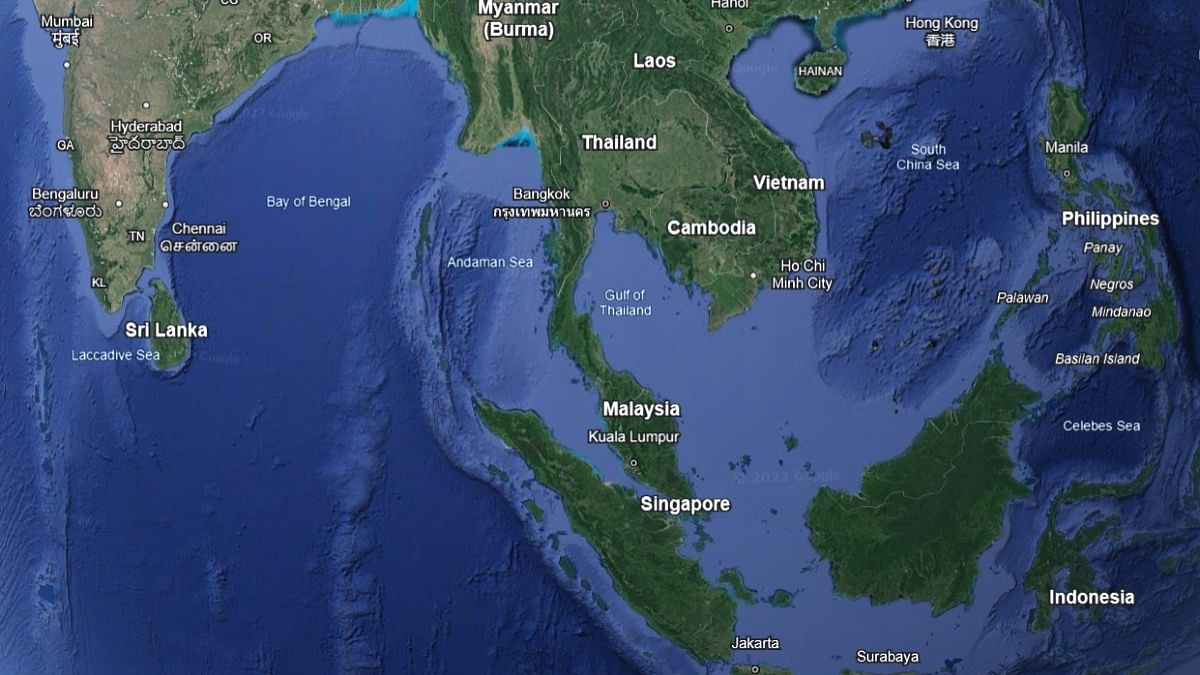
Again, in 1970’s, the canal building project came back and the Thai government, basically driven by a top businessman, a Thai-Chinese businessman who funded the study. They carried out a study in the 1970’s and said you can build a canal in 10 years or maybe eight years depending on what technology you use in digging and they said that you will take a shorter time to build this canal if you can use small, controlled nuclear explosions to do the digging. Those things can’t happen now.
But the idea of the canal hasn’t quite gone away. The idea of the canal has been alive. It’s like one of those bad ideas which keep coming back and you know what, never dismiss a bad idea because bad ideas have a nasty habit of coming back. If this idea comes back, it will come partly because of infrastructure and time/money savings.
But also because for the Chinese, it will be strategic hedging. Right now the Chinese worry that the Malacca Strait can become a choke-point for them. Some day the balloon goes up between them and India, India can choke Malacca Strait. India is perfectly capable of doing it or if any member of the Quad together can do it or one day Indonesia can also join this because they also have their troubles with the Chinese. In any case, big powers like to hedge. So this is an interesting strategic hedge for China also.
Also Read: SCO, BRICS, RIC: What do they have in common? China at head of table, India faking smiles
If China were to then make this investment which otherwise looks exaggerated because today a canal like that, besides devastating the environment will cost at least $55 billion to begin with. By the time these things are completed, costs keep going up and is it worth spending that much money on? For the Chinese to make that call, strategic calculation will be key. And this worries India a great deal. They only want to secure themselves for energy and for their trade. Why should it worry India too much?
If you want to understand why India worries, look at the map and see as you go from Thailand’s West Coast, there is nothing between Thailand’s west coast and all of India’s eastern seaboard. First of all the Andaman-Nicobar chain comes in the way.
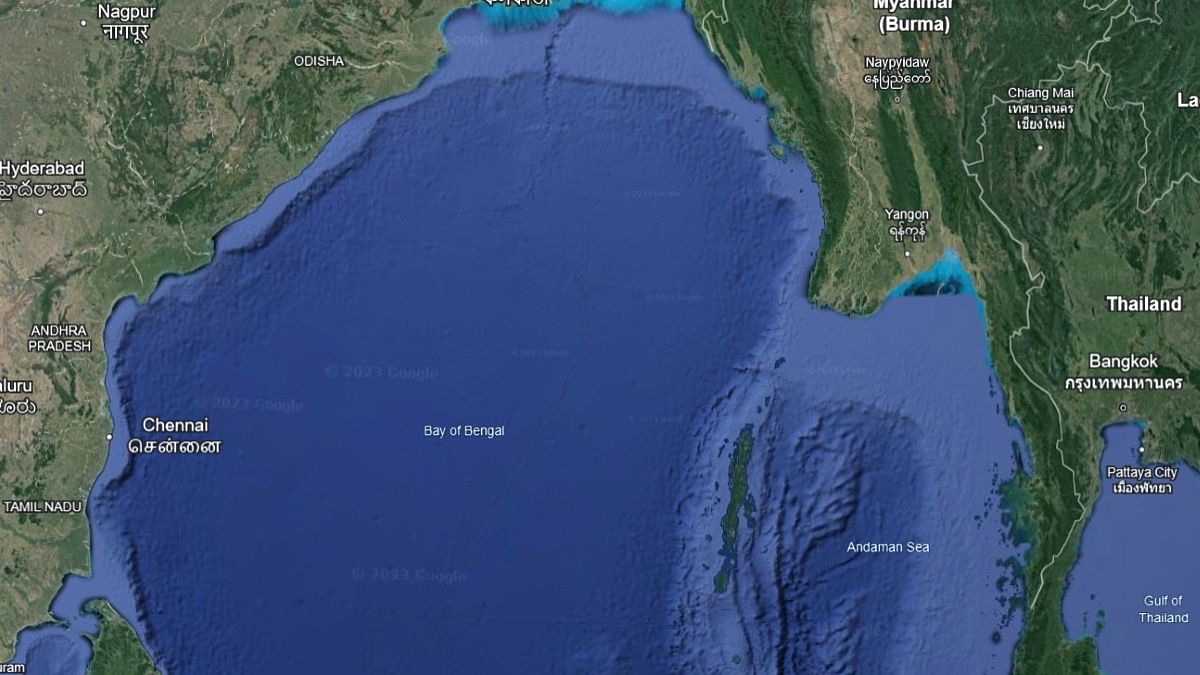
That’s close enough and then all of India’s eastern seaboard, which is today protected, today, maybe for the Chinese navy to create any nuisance for India, they have to come through Malacca where they can be blocked. India is now building a lot of military facilities, naval, air, all kinds in the islands in the Andaman-Nicobar group.
But if this canal is built and the Chinese take control of this canal — the Chinese control of the canal like that is not implausible. The Chinese can do it either through forfeiture like Hambantota or by force or by subversion. The Chinese have many ways of doing it and that’s why India has always been opposed to the idea of the canal.
The canal opens up all of India’s eastern coast to the Chinese Navy. That would almost be like the Chinese taking over all of Arunachal Pradesh and sitting on the foothills facing Assam. India will never allow that. So that’s a strategic threat for India.
This is a double strategic benefit for China. Will the Chinese make that investment? We don’t know. Times are changing. It will be tougher for the Chinese to do it. Yet a bad idea which will never disappear. It will, it will keep coming back.
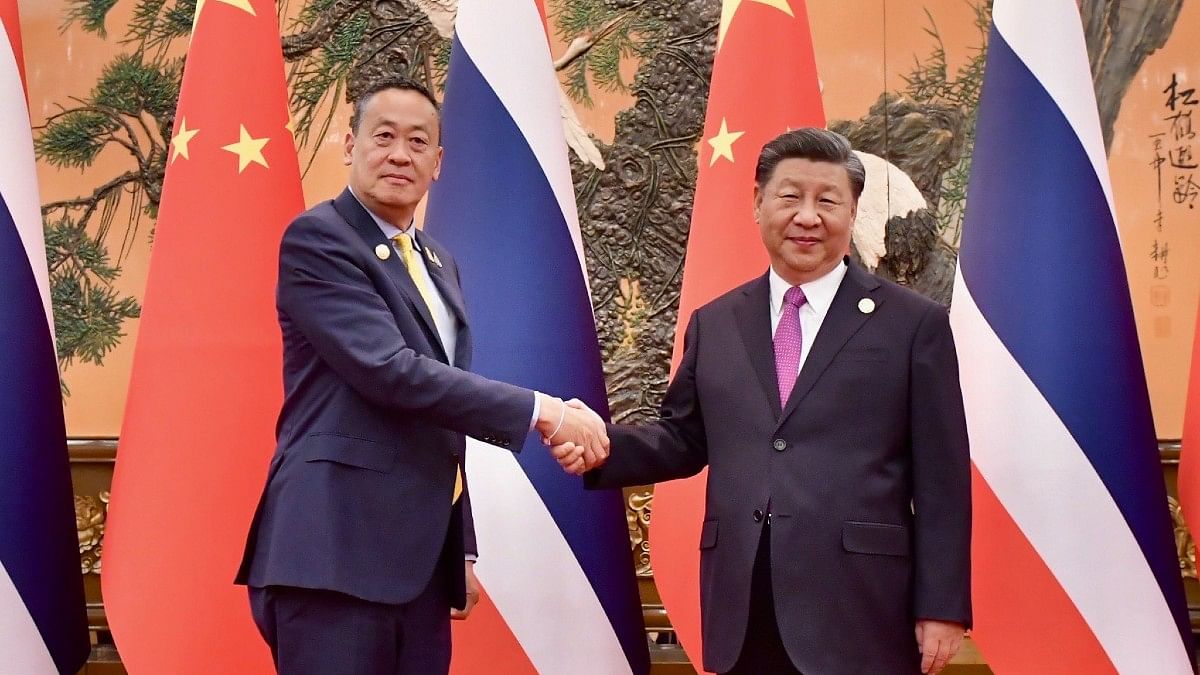
The other important thing that worries many people in Thailand as well because if you look at the demographics of Thailand, I told you, Thailand is mostly Buddhist but there is a twist.
The twist mostly lies in the southern districts of Thailand, the southern provinces of Thailand. That is where the bulk of the Muslim population of Thailand is. About 5 percent of Thailand, in fact, Pew research says 7 percent of Thailand is Muslim. That’s the twist I was talking about. The twist is not that 7 percent are Muslim but that a lot of them are concentrated in the southern districts of Thailand.
That’s also very close to the Malay — Muslim insurgents and weapons. So Thailand worries that if they build a canal like that, this would divide their country on religious and ethnic basis.
Thais also have their strategic fears, India has its strategic fears, China has its strategic benefits, but everybody also knows that it’s a humongous ticket. Everybody also knows it’s going to be environmentally destructive. Everybody also knows that it’s not going to be quite as beneficial as say the Suez or the Panama because what, they cut weeks of time.
The canal or the road-cum-rail will cut two-four days, so purely economic reasoning, it will not be worthwhile. For strategic reasons, if the Chinese want to build it, they will run into a wall from not just India, but also India’s friends and the Quad.
And remember that Thailand is a duty bound ally of America.
This is the full transcript of ThePrint Cut The Clutter Episode 1337 published on 27 October 2023.
Also Read: Two-sided triangle: Fast-growing India is caught in China-Pakistan pincer in Modi’s 10th year


